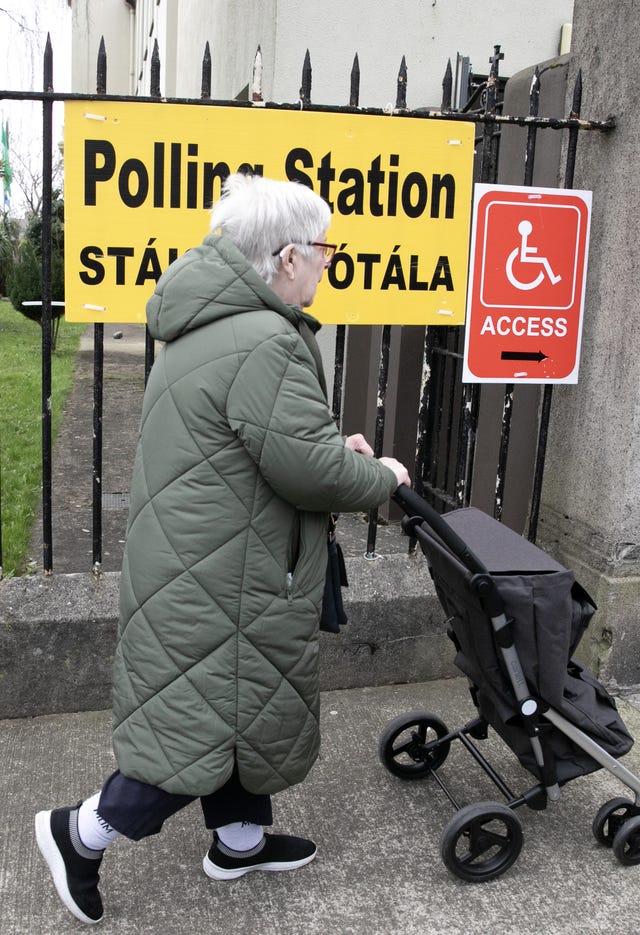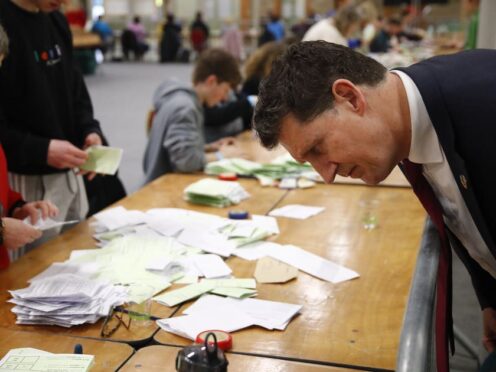Irish transport minister Eamon Ryan has conceded that the government has lost the twin referenda to change the Constitution in Ireland.
He made the comments as early indications show a significant no vote in both questions.
Counting is under way in the twin referenda on proposed changes the Constitution.
The boxes were opened at 9am after the public went to the polls on Friday to vote on whether to change the wording of the Constitution relating to the areas of family and care.
Results for both will be announced separately later on Saturday.
Early tallies show a strong support for no votes, signalling an embarrassing defeat for the government.

“It’s clear we lost,” Mr Ryan said.
When it was put to the Green Minister that the government did not get the result it wanted, he said: “No we didn’t.
“But you have to respect the voice of the people.
“We have to wait until the final count is done but if it is a no no vote, have to respect that.
“I don’t think you can respect the people’s vote by saying ‘what went wrong, the people didn’t vote the right way’.
“People are sovereign in this.
“They have to decide.
“It’s a complex issue, both were complex.
“I would have preferred a yes yes.
“I don’t accept that our campaign did go wrong.”
He added: “It’s complex issues.
“There were a myriad of reasons to vote no.
“We will continue to make sure in government that we will heed that advice from the people.
“It was never easy.
“It took a long time to come up with the wording because it’s not easy, it’s quite complicated when you try to change the Constitution in any way.
“We didn’t convince the public of the argument for a yes yes vote.
“I think the next government will have to come back to this and consider the campaign and what were the arguments that merited a no vote in both cases.”

There was a low turnout reported throughout the day, with some areas understood to be less than 30% of registered voters.
There was a slight uplift at polling stations as people made their home on Friday evening, however it is thought that numbers remained lower compared to previous referenda.
The two questions will be counted separately, with both results expected to be declared at Dublin Castle by Saturday evening.
The family amendment will be counted and declared first.
Sinn Fein leader Mary Lou McDonald said her party is “very much” in touch with the Irish public, despite tallies showing the two referenda will be defeated.
Her party advocated for a “yes-yes” vote in Ireland’s ballot on family and care.
“No, we’re very, very much in touch with people, and you’ll recall that I said from the get-go, that we were very much in favour of removing sexist language from the Constitution, very much in favour of an inclusive definition of families,” Ms McDonald said on Saturday.
“But we knew that the government did come up short in terms of the caring wording. They disregarded the citizens’ assembly, they didn’t consult with opposition or with other stakeholders. They didn’t collaborate, and they failed to convince.
“I know, talking to lots of people, that people were left with an unbalanced decision to make and I think it’s a great pity that the government went on this kind of solo run, and they’ve had their answer.
“I don’t think there has been a lack of clarity for people, I think people when they came out and voted were very clear how they were voting and why they were voting in a particular way.
“If there is one big takeaway message from this, it is that support for people with disabilities as full and equals citizens and support for carers is something that has to be taken seriously by government.
“I think it’ll fall to the next government to vindicate those rights.”
Ms McDonald said Sinn Fein will “return to” consideration the “sexist language” in Ireland’s Constitution if the party is in the next government.
Senator Michael McDowell, a former tanaiste and ex-justice minister, who campaigned for a no no vote, said it was “unwise social experimentation” with the Constitution.
Mr McDowell, who was part of the Lawyers For No group, said: “I trust individual voters.
“They looked at what was being put before them and they said no.
“Many of them will have a slightly different perspective as to why they were voting no, but in the end we live in a republic and the sovereign power is the people and every individual vote is as good as anybody else’s vote and this is an emphatic repudiation of what I think was unwise social experimentation with the Constitution.”
Labour leader Ivana Bacik said: “The result at this early stage certainly looks disappointing for those who campaigned for a yes yes vote.
“I do think and it is clear that it is the government’s responsibility because the government needs to explain to the people first why it chose and proceeded with wording that was so distinctly different from the wording that our Oireachtas committee on gender equality has proposed, wording that cross parties had supported.
“Why did they not go out more assertively and sell it to the people because what we saw from government, particularly in the last few weeks as the no side was gaining ground, we saw a lacklustre campaign from government.”
Taoiseach Leo Varadkar, Tanaiste Micheal Martin and Sinn Fein leader Mary Lou McDonald also voted in the referenda.
The family amendment proposes extending the meaning of family beyond one defined by marriage and to include those based on “durable” relationships.
The care amendment proposes deleting references to a woman’s roles and duties in the home, and replacing it with a new article that acknowledges family carers.
The Constitution is the fundamental legal document for the country and can only be changed with the approval of Irish citizens through a national vote.
The campaigns have led to national debates over the role of women in the home, what responsibility the State has for care and the meaning of family.
The Irish Government campaigned for a yes vote in both amendments.
It says the changes will remove sexist language, recognise family care and extend protection to families not based on marriage.
The result of the referenda will be decided by majority.
Counting of the ballots happens at a constituency basis at various centres around the country.
